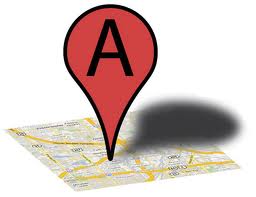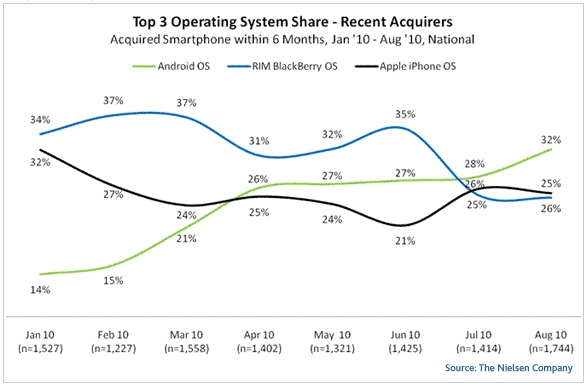 20% of the searches on Google are related to location and according to Google 1 in 13 search result pages showed a Map. This combined with the fact that 96.63% of the users click the results in the first page, appearing in the little map on top can be very, very beneficial for the local business.
20% of the searches on Google are related to location and according to Google 1 in 13 search result pages showed a Map. This combined with the fact that 96.63% of the users click the results in the first page, appearing in the little map on top can be very, very beneficial for the local business.
It is quite obvious that the search engine prioritizes in local searches companies and businesses that have signed up in Google Places, which makes it a good idea to create your own profile for your business. Google places is Google’s free business listing service, which allows local business owners to create a profile of their business with essential contact information, offers, images and reviews. And of course mark their business location on the Google Maps service.
There are 10 little tricks to further improve your Google Places page search engine ranking and help you stand out from the rest:
1. Include keywords in the description of your business
In the Google Places page you are able to describe your business or activity in maximum of 200 letters. Make sure that it includes the most important keywords, but without turning it into a chain of keywords. Write a clear, friendly and efficient description and remember not to address it only to a search engine, but for actual users as well.
2. Do not add keywords in your Google Places page name if they are not already in the original name of your business
It is not a good idea to add keywords to your page name if they are not included in your company’s actual name already. Google is intelligent and always vigilant to avoid users who cheat. In the short run it might improve your results, but you are likely to get caught and punished.
3. Use generic categories and terms to describe your business
When you create your Google Places page, you have the option to include a maximum of 5 different categories to describe the products and services you are offering. The most generic descriptions can help you to improve your ranking.
4. If you have various points of sale, create a profile for each one of them
Besides of adding links to your website or client reviews, it is also possible and necessary to include addresses, phone numbers and other relevant contact information. Therefore if your business has various point of sales, the best thing to do is to create a distinct profile for each one of them.
There has been some confusion if this is possible, since Google Places guidelines say there should be only one listing for each business location. However, Google’s goal with local search is to represent the offline world accurately online, so if you have various real life point of sales you should be able to include it as long as you can meet the quality guidelines. Google verifies the data with you and you are able to ask them directly if you are able to go ahead.
5. Include your brand or business also in other company and business listings
Being included in professional business and company listings is important, because Google gets information from them to verify that your contact information is the same and also places these listings into your Google Places profile. Make sure all the other business information you create in other listings is consistent.
6. Diversify and plan your content updates in time
It is better to publish new information regularly, than suddenly launch a big amount of it at the same time. Do not forget that search engines and especially Google are always vigilant of spam, hoax or online frauds. This means that unusual action can be interpreted suspicious and will be punished.
Do not forget photos and videos either, since Google Places permits publishing of 10 photos and 5 videos. Whether it improves the ranking might be questioned, but for sure it will give more attractive information for the users who access your page.
7. Take advantage of the real-time updates feature
Google has recently added the ability to post real-time updates into the Google Places page. It allows you to promote an offer, sale, event, and freebies as well as provide incentives by adding coupons also specially formatted for mobile phones. It is a great way to talk more directly with your customers who are not yet your followers in Twitter or Facebook.
8. Motivate your satisfied clients to publish their review
Participation and opinion of the satisfied clients is easy and effective way to create a professional reputation not only in Google places, but also in other listings and external websites you can link to your page. Not only will it give potential clients a social proof, but it helps you get closer to the top.
To get reviews, send an email to your new and existing customers or ask users in social networks like Twitter and Facebook to leave a review. Or of course ask them to do it in person when they come to your store. Offer for example points or discount in the next visit as a reward.
9. Integrate your social networks with Google Places page
Google Places page is a good place to promote and include links into your social media platforms and social networks are great way to drive traffic to your Google Places page. As mentioned before, you can ask for client reviews through the social networks and with Google Places real-life updates you can inform users coming through search about your Facebook promotions.
10. Analyse regularly your page information in Google Analytics
Do not forget to analyse the statistic data and information Google Analytics. It includes data about how many times people have found your business on Google, what keywords they used to find it and even what areas people travelled from to visit your business. This information helps you to evaluate, understand and learn from the user behaviour, which allows you to improve your search engine ranking.
And of course, for the best results, do not forget to sign up also for Facebook Places. These two local business listings are similar, but the difference comes in the way users get to the results: Google relies on Search while Facebook relies on Social. On Google users use the search box and the search engine shows first the Google Places results before showing any organic results. In Facebook, users have three ways to get to Facebook Places: search, newsfeed and Facebook apps.
Both have nice benefits, because Google owns the search and has the largest mobile app (Maps), while Facebook can allow your promotion travel from user to user and expand very fast through networks. Facebook Places has also a new feature “Deals”, which has a huge potential. So why not take advantage of both?







